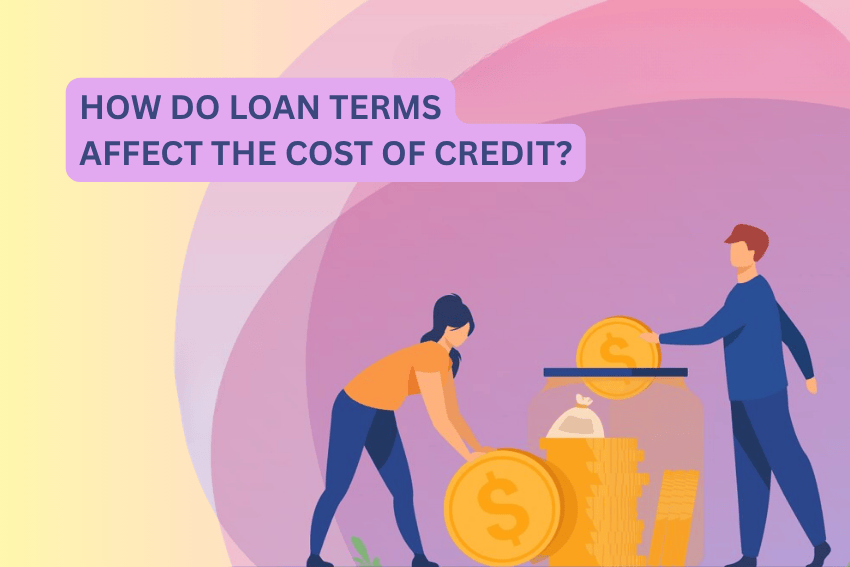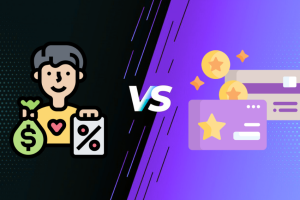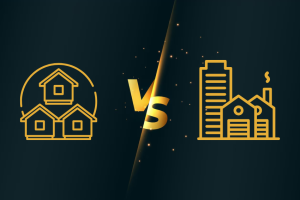When you take out a loan for a car, a home, or education, you’re not just paying back the amount you borrowed. You’re also paying the cost of the loan. This is the amount you pay overtime for using someone else’s money. Understanding the factors that affect this cost is one of the best financial moves you can make. Of all the factors—such as your credit score, the loan amount, and the type of loan—the loan terms are the most influential.

We’re going to break down here how different loan terms influence what you ultimately pay, why two loans with identical rates cost different amounts sometimes, and how to choose the perfect term for your needs. We’ll explain it all in simple, no-med-school-necessary terms.
What Are Loan Terms?
Let’s start by defining just what the term “loan term” is. The loan terms are the conditions and details of your loan contract. They define how, when, and in what amount you’ll repay. The most critical ones are:
- Loan amount: The amount of money you owe.
- Loan term (duration): The time given in months or years, that the loan has to be completed.
- The entire amount of money you pay every month to cover the interest and principal (the cost of borrowing) is known simply as your monthly payment.
- Charges and charges: Costs such as origination, late, or payment charges.
Your total cost of credit, or the amount you’ll pay back at the conclusion of the loan, is calculated when you add things all up.
They all add up to calculating your total cost of credit—the amount you’ll pay when the loan ends.
The Role of Interest Rates
Interest is the cost of borrowing money. Interest rates fall into two categories: How banks and other lenders make a profit by lending money.
Interest Rates
- Fixed Interest Rate: It never changes for the whole term of the loan. Your payment is fixed, and it is easier to plan your budget.
- Variable Interest Rate: Can change over time according to market forces. Payments will increase or decrease according to the shifting economic forces.
Example
If you borrow $10,000 at a 5% fixed interest rate for 5 years, you will pay a lot less total than if the same loan were 10%.
Even a relatively small rate difference will save or cost you thousands of dollars on the life of the loan.
Key takeaway:
Higher interest rates result in higher total costs, but your interest payment amount also depends on how long you take to repay the loan. This is where the loan term comes into play.
How Loan Term Affects Cost?
How long your loan term is, how many years or months you take to pay it off, it has one of the largest influences on your overall cost.
Short-Term Loans
- Have more monthly payments since the balance is paid out in fewer months.
- But you pay less overall interest since the lender makes money for a shorter period.
- You pay off your debt sooner and own your assets free and clear sooner.
Long-Term Loans
- Have smaller monthly payments, so they may be more manageable short-term.
- But you pay more interest over time since you’re taking money out for an extended period.
- You’re in debt longer, usually paying twice as much interest as with a shorter loan.
On the surface, the 10-year loan appears easier to fit into your budget, but you’ll pay more than $3,000 more in interest—just for taking longer to pay off.
Lesson:
A lower monthly payment may be tempting, but it sometimes conceals a higher total price.
Monthly Payments and Budgeting
- When consumers shop for a loan, they usually look at the monthly payment, the one that has a direct impact on their budget. And rightly so; you want to ensure your payments are manageable.
- But focusing solely on monthly payments can be misleading. Shorter payment periods typically come with longer terms, which means you’ll pay more interest over the life of the loan.
Smart tip:
- Compare the total cost of the loan with your monthly affordability. Asking “Can I afford this payment?” is not enough. enquire, “How much will this loan really cost me in total?”
Total Cost Vs. Monthly Affordability
Selecting a loan usually comes down to this compromise:
- Lower payments today (longer term)
- Future total cost reduction (shorter term)
Can I Afford Increased Monthly Payments Comfortably?
I am getting ready for any coming financial exchange, like a move, a new job, or a baby.
The Impact of Early Repayment
- Some borrowers choose a longer term for flexibility, then pay extra when they can. This can reduce total interest and shorten the loan.
- However, not all lenders allow this without fees.
- loans have prepayment penalties, charges for paying off your loan early because the lender loses out on interest.
Tip:
Before signing, ask if there are early repayment penalties.
If not, you enjoy the privilege of a longer term but can repay the loan faster when you can afford it.
Charges, Fees, And Hidden Charges
Terms of the loan go beyond interest. All but the most basic loans have additional costs that contribute to the price of borrowing.
Fees are common and include:
- Origination fee: One-time processing fee for the loan.
- Late payment fee: For late payment of a due date.
- Prepayment penalty: For prepaid loan before term.
- Administrative or processing fees: For opening or keeping an account.
Example:
Your $10,000 loan costs $500 in origination cost and $2,000 in total interest. Your actual cost of credit is $2,500, not $2,000.
Read the fine print. Occasionally the “lowest interest rate” loan is not cheapest when fees are added in.
Credit Score and Loan Terms
Your credit score has a large impact on the terms of the loan that you’re offered.
- High credit score: You should expect to be approved for lower interest rates and more favorable repayment terms.
- Low credit score: You may be offered higher rates, shorter payment terms, or additional conditions.
And even a differential of 50–100 points on your credit score can shift your rate by several percentage points—charging or saving you thousands over the life of a loan.
Tip:
inquiry and boost your credit rating before you sign for large loans. Pay off credit card stability, don’t take on new credit, and correct reporting mistakes to negotiate more favorable terms.
Secured vs. Unsecured Loans
The length of loan you borrow also affects your terms.
Secured Loans
- Secured by collateral (such as a house or vehicle).
- Lower interest rates because the risk for the lender is reduced.
- Tougher penalties in case of default—since the lender can seize the collateral.
Unsecured Loans
- No collateral needed.
- Higher interest rates since they’re riskier for lenders.
- Simpler approval of lower amounts but more expensive overall.
Example:
A car loan secured on the car could have a 6% interest rate, while an unsecured personal loan of the same amount would be 10–12%. That difference mounts up considerable over time.
Real-Life Scenarios
Let’s see how it works out in reality.
- Scenario A: Sarah’s Car Loan
- Loan Amount: $25,000
- Interest Rate: 4%
Length of Loan: 3 years
- Monthly Payment: ~$737
- Total Interest Paid: ~$1,530
Scenario B: John’s Auto Loan
- Loan Amount: $25,000
- Interest Rate: 4%
Term: 6 years
- Monthly Payment: ~$391
- Total Interest Paid: ~$3,170
- John’s monthly outlay is nearly half of Sarah’s, yet he pays around $2,000 more in interest over the long term.
- That’s the power—and cost—of loan duration.
Choosing The Right Loan Term for You
There’s no one-size-fits-all “best” loan term—it varies by goals and situation.
- If your goal is to save money overall:
- Choose a shorter term (you’ll pay less interest).
When You Are Able, Make Extra Payments?
Stay away from taking out loans with high interest rates.
- If you need to make acceptable payments:
- Select an extended time frame but be mindful that the final price is going to be higher.
- To reduce the time frame, try to make extra payments at times.
- If rates of interest drop or your income rises in the future, refinance.
Always:
- Consider various loan offers.
- Focusing primarily on the interest rate, focusing on the annual percentage rate or APR.
- To figure out if there are any hidden charges or penalties, read the fine print.
How To Evaluate Loan Offers?
If you compare loans, lenders will give you interest rates and payments per month. But they don’t always show you the entire picture.
- Use the APR
- The Annual cost Rate (APR) comprises:
- Interest rate
- Fees
- Other borrowing charges
- This better indicates what the loan actually costs you in one year.
Example:
- Loan A has an interest rate of 6% but an origination fee of $500.
- Loan B has a rate of 6.5% but zero fees.
- Loan B could really be less expensive in the long run—something you’d only recognize when comparing APR or total payback.
Tip:
Compare various term lengths, rates, and fees using online loan calculators. A comparison of a few minutes can save you hundreds or thousands of dollars.
Refinancing And Changing Terms Later
Most folks don’t know that loan terms aren’t necessarily set in stone. You can sometimes refinance—that is, swap out your current loan for a new loan with better terms.
- Refinancing can:
- Reduce your interest rate (if rates fell or you did better on your credit).
- Shorten your term (to retire debt sooner).
- Decrease monthly payments (if you lengthen the term).
But refinancing may cost you something, so crunch the numbers to see if the savings are worth it.
Know Your Total Cost of Credit
Your total cost of credit isn’t merely interest; it’s the total amount of interest paid.
Fees and charges:
- Insurance or add-ons attached to the loan.
- Always work out your total repayment, not only monthly. This suggests the loan’s total cost.
Equation:
- Total Credit Cost = (The Total Number of Payments Made) – (Amount Borrowed) is the equation.
- You can compare loans at lower rates and stay free of pay with this amount in mind.
The Psychology of Loan Terms
Here’s an interesting fact: lenders tend to use longer terms in order to make loans seem more manageable. Low monthly payment is an illusion that produces the impression of a fantastic deal but in reality, can be more expensive over the long run.
That’s why one must look beyond the monthly payment and inquire:
How Much in Total Will I Pay at the End of This Loan?
If you think in terms of totals (not months), you make wiser, more knowledgeable financial choices.
Quick Takeaways
- Shorter loans = more cost but lower overall expenses.
- Longer loans = fewer payments but more total cost.
- Interest rate and loan terms collaborate to decide how pricey your loan is.
- Always look for hidden fees and penalties.
- Your credit score actually decides the terms of the loan you qualify for.
- Shop around using APR and other calculators on the Web to compare the costs first.
Conclusion
It is necessary for anyone who plans to borrow money—to buy a car, home, business, or education—to understand how loan terms affect the price of credit.
What you sign on today will define your financial future. A lower monthly payment may be comfortable to you right now, but if the loan is to last for decades, you may wind up paying thousands more than you had to.
The most intelligent strategy is to peek past the monthly payment and see what the loan cost is overall. Plan big, plan flexible, and always read the fine print before you sign.
When you know how interest rates, loan terms, and fees work together, you have the authority to:
- Select loans that align with your objectives.
- Save yourself thousands of dollars in interest.
- Pay off debt sooner.
- That is, make decisions, not just out of convenience today, but out of savings tomorrow.
A small financial wisdom now can be equal to a lifetime of better decision-making and tighter control over your cash.


